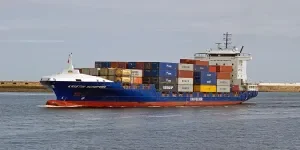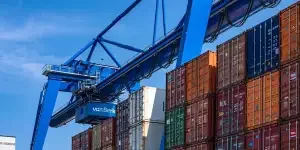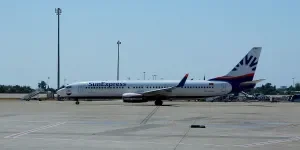Even the smallest errors can cause serious repercussions, particularly in export compliance. Ensuring accurate export classification is crucial for adhering to regulations, preventing delays, and avoiding costly penalties.
In this article, we’ll outline the eight most common classification errors we encounter and provide practical advice to help you avoid them.
Table of Contents:
- Confusing HS, HTS, Schedule B, and ECCN Codes
- Failure to keep up with classification codes updates
- Ignoring product variations and modifications
- Failing to validate supplier-provided classifications
- Misjudging a product’s essential character
- Assuming your product falls under EAR99
- Misinterpreting 600 Series ECCNs
- The best way to prevent classification errors
1. Confusing HS, HTS, Schedule B, and ECCN Codes
Many exporters can misunderstand the different classification systems, leading to incorrect submissions and compliance issues. While these systems are interconnected, there are essential differences between them. Here is a quick overview of how they differ:
Harmonized System (HS) Codes
Often referred to as HS numbers, this six-digit coding system is utilized by customs authorities worldwide to determine the duty and tax rates for various products.
Many countries, including the United States, extend the standard HS code by adding extra digits to provide more detailed product classifications. These additional digits differ from one country to another.
Harmonized Tariff Schedule (HTS) Codes
The HTS codes of the United States is a 10-digit import classification system unique to the U.S. Administered by the U.S. International Trade Commission (ITC). It is essential for determining commodity duties.
The first six digits of an HTS code align with the standard HS code, while the final four digits are unique to the U.S. If you’re importing into the United States, this is the code you’ll need to use.
Schedule B Codes
It is a 10-digit subset of HTS codes specifically for U.S. exporters. The U.S. government generally uses Schedule B codes for export statistical tracking. Since Schedule B codes are based on HTS codes, exporters often find them easier and more efficient for product classification.
Export Control Classification Number (ECCN)
This export classification is generally used for managing export controls and determining licensing requirements under the Export Administration Regulations (EAR). It categorizes items based on their potential use and sensitivity, helping ensure compliance with export regulations.
2. Failure to keep up with classification codes updates
The Harmonized System is overseen by the World Customs Organization (WCO), which updates HS codes every five years to reflect new products and modifications to existing ones. The latest revision took effect on January 1, 2022. You can find details on the most recent updates here.
To ensure compliance with current export regulations, regularly review and update your product classification codes or work with reliable freight forwarders that stay current with these changes.
Find Our Forwarding Experts!
3. Ignoring product variations and modifications
Applying a single classification to all product variations (even with notable differences in features or functions) can result in errors.
For example, consider a company that makes electronic devices like laptops. They produce a standard model and a high-security model with advanced encryption.
While the standard model might fall under a general ECCN (Export Control Classification Number) for laptops, the high-security version may require a more restrictive ECCN due to its dual-use potential.
It’s essential to evaluate each product variant individually to determine if different classifications are necessary and reflect any modifications in the classification process.
4. Failing to validate supplier-provided classifications
Relying solely on the classification codes provided by suppliers can lead to serious issues if they are incorrect. You better verify the accuracy of these codes independently. Conduct your own classification analysis, as the responsibility for correct export classification ultimately rests with you as the exporter.
5. Misjudging a product’s essential character
Before classifying a product, it’s essential to thoroughly understand its description, function, composition, and characteristics. Ensure you have detailed documentation, including:
- Intended use and defining attributes
- Specifications (e.g., size, volume, thickness)
- Composition (e.g., metals, plastics, wood)
- Performance criteria (e.g., capacity, flow rates, voltage)
When a product seems to fit into multiple categories because it’s a mixture or composite, the General Rules of Interpretation (GRI) state that classification should be based on its essential character. Misclassification often happens when paying more attention to secondary characteristics than the product’s core attributes.
6. Assuming your product falls under EAR99
EAR99 is a classification under the Export Administration Regulations (EAR) for items not listed on the Commerce Control List (CCL). It’s often considered the default or “easy” classification. Because it means the item doesn’t require an export license unless sent to a sanctioned country, embargoed destination, or prohibited end-user.
While classifying an item as EAR99 might seem convenient to streamline the export process, this assumption can lead to compliance issues if the item falls under a specific ECCN.
Even products that look simple or low-tech may have designated ECCNs, especially if they have dual-use applications (such as civilian and military). Always carefully review the CCL to confirm whether your product has an ECCN and if an export license is required.
7. Misinterpreting 600 Series ECCNs
Items previously listed on the United States Munitions List (USML) but now reclassified under the CCL are often designated with 600 series ECCNs. These items were transferred to the EAR in order to ease export restrictions, particularly for NATO countries and other allied nations. However, navigating this category can be challenging, as it frequently involves technology with potential military applications.
For 600 series products, having an engineer who understands the technical specifications can be crucial for accurate classification. A non-technical compliance officer may lack the expertise needed to make precise determinations.
Therefore, companies should consider forming cross-functional teams with diverse skill sets to collaborate on the classification process. Overlooking these aspects could cause incorrect classification and subsequent compliance challenges.
The best way to prevent classification errors
Leveraging these strategies and resources can significantly reduce the likelihood of classification mistakes. Nonetheless, the complexities of export regulations can be challenging to navigate.
Source from Airsupply
Disclaimer: The information set forth above is provided by airsupplycn.com independently of Alibaba.com. Alibaba.com makes no representation and warranties as to the quality and reliability of the seller and products. Alibaba.com expressly disclaims any liability for breaches pertaining to the copyright of content.



